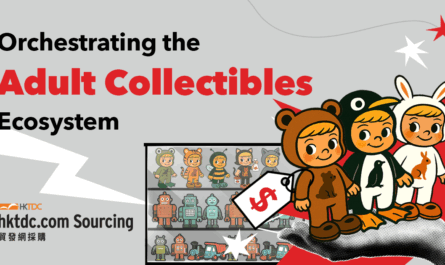Why Gamified Shopping Is a Hot Trend for Buyers in Asia
Gamified shopping—where surprise, competition, and reward are embedded into the selling experience—is now a proven growth driver across Asia’s retail landscape. From blind box collectibles to subscription beauty kits and curated snack sets, Millennials and Gen Z power this evolution both online and offline. Recent market analysis shows brands embracing gamification and reward strategies see double-digit sales increases, stronger repeat rates, and sustained customer loyalty compared to traditional retail formats. For buyers, this trend delivers fresh opportunities to connect with young, digital-savvy audiences and build differentiation in a crowded marketplace.
Asia-Pacific’s gamification market is projected to grow at an exceptional pace—forecast at 27.5% CAGR through 2032, the highest regionally worldwide. Early movers in both retail and e-commerce have proven that surprise-driven engagement leads to rapid customer acquisition and repeat business.
The Growth of Gamified Shopping in Asia: History and Market Analysis
Gamified shopping surged across Asia beginning in the late 2010s, led by blind box collectibles from Pop Mart, “blessed bags” in beauty and food, and increasingly interactive loyalty programs. By 2024, Asia-Pacific’s blind box market reached $3.2 billion and is anticipated to top $7.5 billion by 2033, growing at 10.2% CAGR. China commands the largest share (over 45%) of blind box revenue and leads retail innovation, with three-quarters of buyers under age 35 reporting regular engagement with surprise formats.
Beyond collectibles, beauty sets, snack subscriptions, and event-driven packs are all posting strong gains. China’s collectible toy segment is forecast to exceed $8 billion by 2025, seeing 35% annual growth in micro-collectibles and limited-edition surprises. Regionally, the broader toy market hit $111.8 billion in 2024—building sets and collectibles each posted double-digit growth, led by “kidult” segments and viral series launches. Beauty subscription boxes in China will triple to $135.1 million by 2030 (19.8% CAGR), with India closely following at $90.8 million. Snack box subscriptions are likewise accelerating, with 7–8% CAGR in China and India through 2035.
Why Buyers Should Pay Attention—Gamified Shopping Changes Sourcing
Gamified shopping differs from traditional retail by emphasizing engagement, emotion, and repeat purchase. These products spark curiosity and social sharing. For buyers, successful sourcing today means:
- Seeking collectibles, blind boxes, surprise packs, and curated sets that prompt social buzz and frequent re-orders.
- Partnering with manufacturers who can offer custom packaging, thematic series, and quick launches for special occasions—rather than static product lines.
- Considering packaging and presentation: curiosity, visibility, and themed designs make surprise-driven products stand out in both digital and physical channels.
Buyers who incorporate these strategies across collectibles, toys, beauty, and snack categories stand to benefit from higher margins and robust customer retention.
Sourcing Categories, Market Trends & Actionable Tips
In Asia’s fast-growing gamified shopping sector, buyers are pursuing two main strategies: sourcing authentic blind box and surprise products from established manufacturers, or creatively assembling their own packs—combining collectibles, toys, beauty items, snacks, and personalized packaging. These approaches drive engagement, repeat sales, and social buzz across both online and offline retail channels, delivering standout value to modern consumers.
Collectible Toys, Blind Box Surprises & Gamified Play
Market Insight:
Asia-Pacific’s collectible and blind box toy market is showing rapid expansion, with forecasts of 9–11% CAGR through 2035 and total market values projected to surpass $8 billion by 2033. China’s market alone is already above $8 billion for blind box toys as of 2025, and overall collectibles saw a 35% jump last year with both “kidult” adults and younger buyers embracing micro-collectibles, surprise boxes, and viral character series. The region’s toy and collectibles retail—including interactive, building toys, and mystery packs—has reached $111.8 billion, with recurring purchases fueled by seasonal launches and popular IP collaborations.
How to Source for Gamified Success:
- Partner with specialist manufacturers or distributors who offer licensed, randomized collectibles—including popular themes from anime, gaming, or local pop culture. Collaborations and franchise tie-ins (even on a small scale) fuel demand, especially when exclusivity or limited runs are involved.
- Build customized surprise packs by combining trending mini-figures, character toys, or micro-collectibles. Use simple, ready-made boxes, sealed pouches, or bags—paired with stickers, info cards, or collectible checklists for extra excitement. Premium branding is not required; visually clean, minimal, or themed packaging drives appeal and reduces cost for smaller businesses.
- Launch and promote your releases through digital channels such as unboxing videos, influencer partnerships, or countdown-based online drops. Unboxing and reveal content regularly goes viral and directly boosts both immediate sales and brand visibility with young and “kidult” audiences.
- Curate your assortment by theme, color, or pop-culture interest for maximum social buzz. Grouping products around popular series, characters, or seasonality encourages repeat purchases and easy social media sharing. Simple, eco-conscious, or geometric packaging solutions are especially on-trend and practical across online and physical retail.
Design Highlight:
Visually clean, eco-conscious packaging—such as minimalist boxes, pastel graphics, and distinctive cube or geometric shapes—stands out across retail shelves and e-commerce channels. Simplicity in design, use of recyclable materials like paperboard, and space-efficient or reusable formats are particularly favored by Gen Z and Millennial shoppers. Brands opting for lightweight, streamlined, and bio-based materials signal modern values and help boost repeat purchases through both sustainability and social appeal.

Beauty Subscription Sets & Mystery Boxes
Market Insight:
China’s beauty box segment is expected to triple by 2030 (19.8% CAGR), making it a top driver in Asia’s gamified shopping market. The most successful beauty subscription boxes feature curated mixes of both skincare and makeup products, with mid-tier pricing—balancing quality and accessibility—remaining the most attractive to consumers. Skincare items such as sheet masks, serums, and cleansers often serve as the foundation of these boxes, while mini lipsticks, color palettes, and mascara are popular choices for makeup-focused variants.
Product & Packaging Recommendations:
- Combine trending skincare items (like serums and masks) with seasonal or high-demand makeup products (such as lipsticks or brow pencils). Mixed sets attract a broader customer base, while single-category boxes can be effective for themed promotions or holiday sales.
- Mid-range beauty boxes offer the best balance of accessibility and perceived value, making them appealing for frequent purchases or gifting.
- Collaborate with micro-influencers or up-and-coming content creators for affordable sampling, box reviews, or co-promotions—user-generated content and peer reviews are highly trusted in the beauty segment.
- Encourage referrals and social testimonials by featuring unboxing photos, customer ratings, and short review clips on your digital channels to build trust and organic buzz—especially helpful for smaller brands.
Legal & Sourcing Best Practices:
- Only include branded products when sourced through authorized channels or approved brand partners, as using branded items without permission may violate trademark, resale, or distribution agreements—even for genuine products.
- Partnering with local or indie brands for promotional collaborations is often easier and provides more flexibility—be transparent in all agreements.
Design Highlight:
Fresh, inviting packaging is essential for beauty boxes. Pastel hues, subtle floral motifs, and soft gradients are especially popular among young, style-conscious consumers. Minimalist, recyclable materials (like matte paper or soft-touch finishes) give a premium look with eco cred. Inner trays and neat dividers help organize products, while elegantly printed product guides or personalized notes amplify the unboxing experience and encourage sharing on social media.

Food & Snack Subscription Boxes
Market Insight:
Asia’s snack subscription box sector is growing at 7–8% CAGR, driven by innovative health-focused, vegan, and festive curated boxes. Rapid e-commerce adoption and shifting lifestyles in China, India, and Japan support steady year-round sales, with popular trends including “discovery” assortments, regional flavor themes, and giftable formats.
Practical Assembly & Compliance Advice:
- If you assemble boxes using already labeled, pre-packaged snacks and do not open or alter them, generally you do not need to add a separate ingredient label for the overall box.
- When selling online or in certain locations, some platforms or regions may ask for a box content list—such as snack names or a summary—on packaging or your product page. Check requirements with your sales platform or market before launching.
- Do not repackage, relabel, or mix unlabeled/bulk snacks unless licensed as a food manufacturer. Loose or custom treats must be labeled individually to comply with food safety rules.
- Best to use individually packaged, clearly labeled snacks from trusted sources and avoid changing existing labels.
- Including a simple printed card that lists each snack’s name and origin helps boost clarity and consumer confidence.
Packaging Tips:
- Curate boxes by mixing local favorites, wellness snacks, seasonal items, and festive treats for gifting appeal and repeat business.
- Use packaging that is functional and visually appealing—protect snacks in transit, and make boxes easy to open and gift. Partitioned layouts and reusable tins add value.
Design Highlight:
Simple, sturdy packaging is best for snack subscription boxes—prioritize functional designs that keep products safe in transit and easy to open. Eco-friendly materials, such as recyclable or kraft paper, help build trust with today’s consumers. Clean, neutral color palettes or clear windows are often used to signal freshness and authenticity, while bold or playful graphics add appeal for festive or children’s snack boxes. Unique box structures, dividers, or geometric (cube, hexagon) shapes can make your product more memorable and giftable, helping your box stand out on retail shelves and in unboxing moments online.

Unlocking Growth Through Gamified Shopping: Final Thoughts
Asia’s gamified shopping wave is fundamentally changing retail, offering new ways to win loyalty and drive repeat business. By integrating blind box collectibles, surprise toys, curated beauty kits, and innovative snack subscriptions—and by embracing practical design solutions like eco-friendly packaging and smart, consumer-friendly formats—businesses are well positioned to attract Millennials, Gen Z, and the growing “kidult” segment.
Explore what’s possible, experiment with new categories, and capture your share of Asia’s fast-growing, play-inspired retail future. The next breakout product is waiting to be unboxed.
Take the first step: source smarter by connecting with quality suppliers and sending enquiries directly at hktdc.com Sourcing, Asia’s trusted B2B platform for innovative, on-trend products.
Bonus for Suppliers
Showcase your innovative and quality products to global buyers already sourcing on hktdc.com Sourcing. Join today to boost your visibility, connect with serious business leads, and stay ahead in Asia’s dynamic marketplace. Join hktdc.com Sourcing now and unlock new growth opportunities.
Asia-Pacific Market Data, Trends, and Consumer Insights
Statista, Mintel, Euromonitor International, Frost & Sullivan, NielsenIQ, Grand View Research, McKinsey, Accio, HKTDC International Buyer Sourcing Behaviour Survey 2025
Product Category and Design Innovation
GWI, Deloitte, Kantar, Gartner, JD.com Research Institute, China Academy of Information and Communications Technology (CAICT), HKTDC Research, Pop Mart Financial Reports
Sustainability, Packaging, and Regulatory Compliance
IMARC Group, FSC International, Global Organic Textile Standard (GOTS), BSR, PwC, Food Safety Authority of Hong Kong, Singapore Food Agency, China SAMR, JETRO
Retail & Digital Sourcing Insights
Shopify, OrdersInSeconds, Martal Group, LinkedIn B2B Institute, Forrester
Communication, Brand, and Buyer Engagement
TrustMary, Salesforce, The Drum, Ironpaper, SEMrush, Ahrefs
Keyword, Trend, and Platform Analytics
Google Trends, Google Ads Keyword Planner, AgencyJet, HKTDC Sourcing, HKTDC NewsBites







